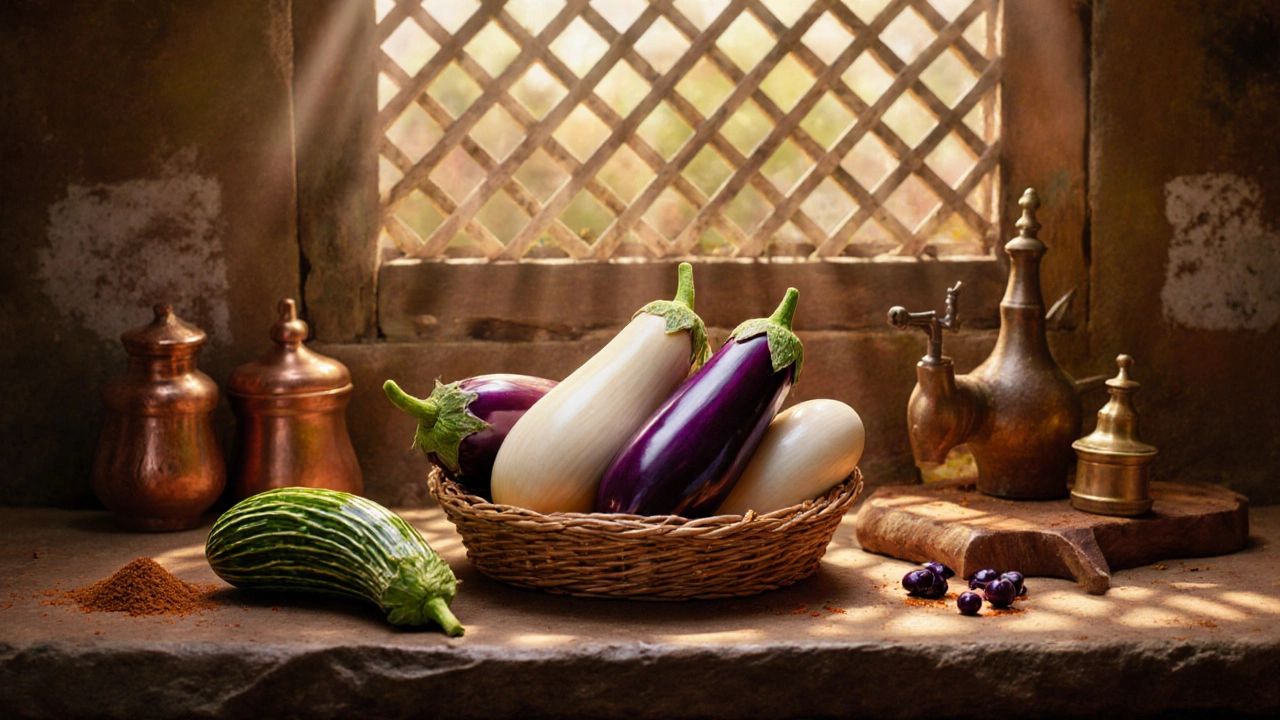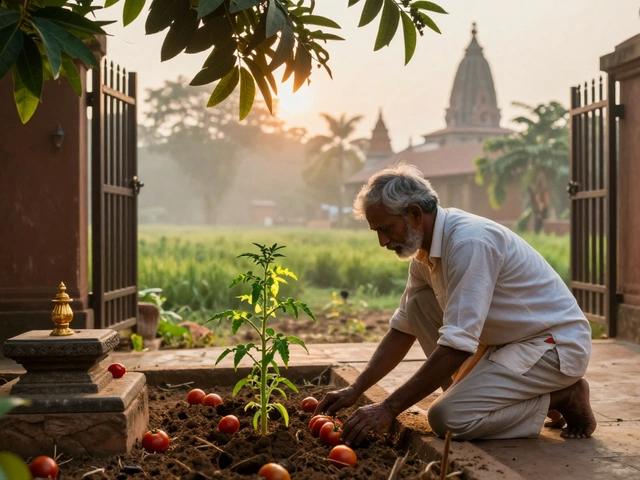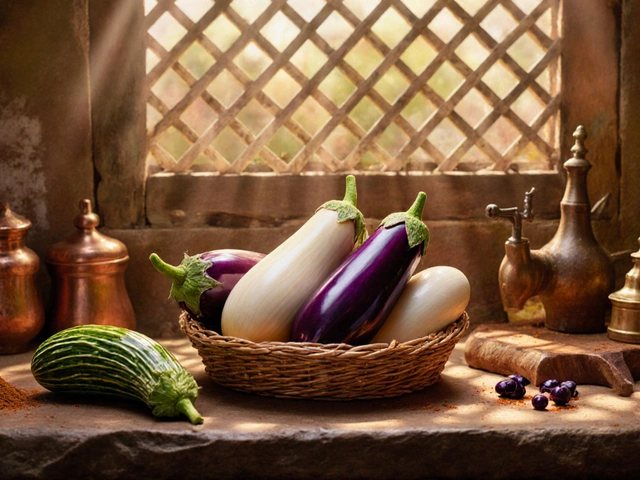Brinjal Variety & Nutritional Comparison Tool
Nutritional Comparison
| Variety | Region | Fruit Color | Size (cm) | Key Trait |
|---|---|---|---|---|
| Turkish (Ishik) | North India | Deep purple | 15–20 | Thin skin, great for grilling |
| White Egg | Punjab & Haryana | Ivory | 12–18 | Mild flavor, ideal for curries |
| Ridge Gourd-Like (Karkalla) | Southern states | Green with ridges | 20–30 | Sturdy, holds up in long-cook dishes |
| Japanese (Kunwai) | Eastern India | Light purple | 10–14 | Slightly sweet, perfect for stir-fries |
| Mini-Thai | Across India | Dark violet | 5–8 | Compact, great for pickling |
When Indian kitchens talk about the Brinjal, also known as Eggplant, it’s often hailed as the king of vegetables. This title isn’t just a marketing gimmick - it reflects the crop’s culinary versatility, nutritional punch, and deep cultural roots across the subcontinent.
What Makes Brinjal the King?
Three factors thrust Brinjal to royalty status:
- Culinary versatility: From the fiery baingan bharta of North India to the sweet vangi bath of the South, Brinjal adapts to every spice profile.
- Nutrition: One cup of cooked Brinjal delivers about 35% of the daily value for potassium, 20% for fiber, and antioxidants like nasunin that protect brain cells.
- Adaptability: The plant thrives in tropical, subtropical, and even temperate zones, making it a staple from Punjab’s plains to the hills of Himachal.
Popular Indian Brinjal Varieties
India cultivates over 50 named varieties, each with a distinct shape, color, and flavor. Below is a quick look at the most common ones:
| Variety | Region | Fruit Color | Typical Size (cm) | Key Trait |
|---|---|---|---|---|
| Turkish (Ishik) | North India | Deep purple | 15‑20 | Thin skin, great for grilling |
| White Egg | Punjab & Haryana | Ivory | 12‑18 | Mild flavor, ideal for curries |
| Ridge Gourd‑Like (Karkalla) | Southern states | Green with ridges | 20‑30 | Sturdy, holds up in long‑cook dishes |
| Japanese (Kunwai) | Eastern India | Light purple | 10‑14 | Slightly sweet, perfect for stir‑fries |
| Mini‑Thai | Across India | Dark violet | 5‑8 | Compact, great for pickling |
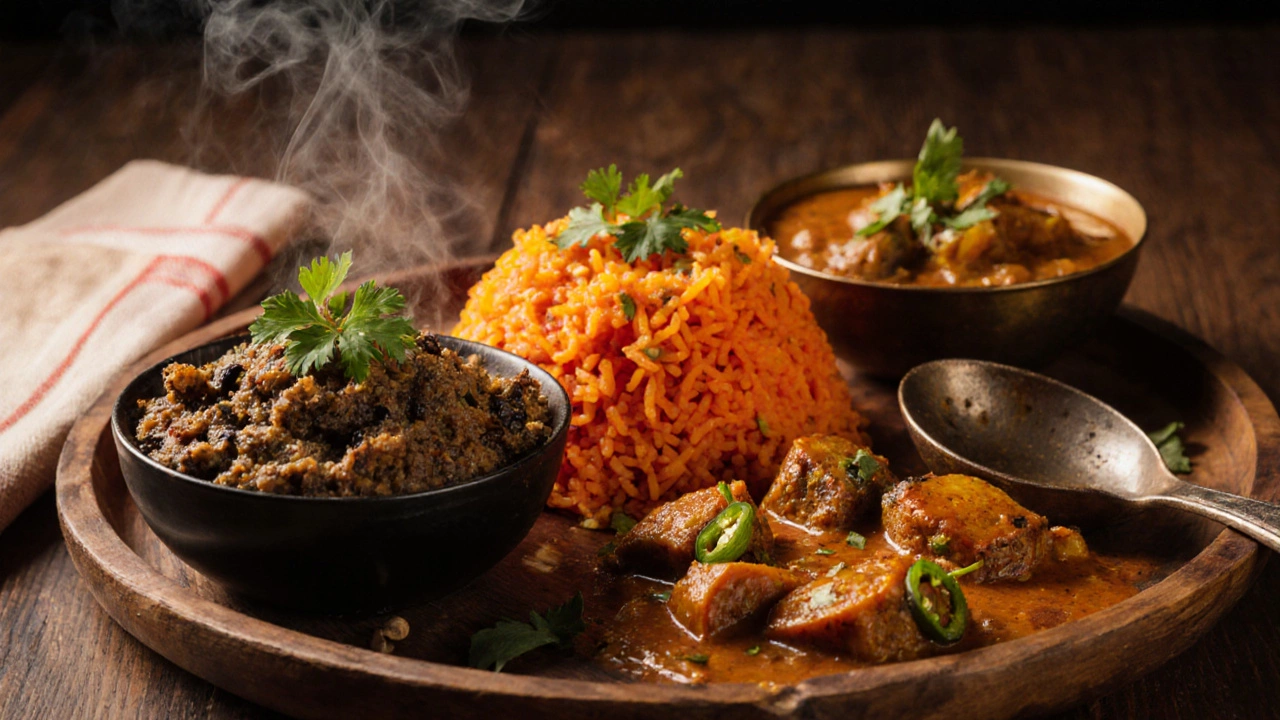
How to Grow Brinjal in Indian Conditions
Even if you’re a home‑gardener on a balcony, you can follow these steps to harvest your own “king”:
- Seed selection: Choose certified seeds of a variety suited to your climate. For hot‑dry zones, the Turkish type tolerates high temperatures.
- Soil preparation: Brinjal prefers loamy soil with a pH of 5.5-6.5. Amend heavy clay with compost and sand to improve drainage.
- Sowing: Start seeds in seed‑raising trays 2weeks before the last frost. Transplant seedlings when they have 3 true leaves and the night temperature stays above 15°C.
- Spacing: Plant at 45‑60cm apart in rows 75cm apart. This spacing ensures good air flow, reducing fungal pressure.
- Irrigation: Keep the soil evenly moist but not water‑logged. Drip irrigation is ideal for saving water in arid regions.
- Fertilisation: Apply a balanced NPK (20‑20‑20) fertilizer at planting, then side‑dress with composted manure every 4weeks.
- Pest management: Common pests include Fruit‑and‑Shoot Borer and aphids. Neem oil sprays and sticky traps keep them in check.
- Harvest: Pick fruits when they reach full colour and have a slight give to the touch. Harvesting early encourages more production.
For container growers, use a 12‑inch pot filled with a mix of garden soil, compost, and perlite. The same spacing rule applies inside the pot - one plant per container works best.
Why Brinjal Beats Other Indian Staples
Let’s compare Brinjal with three other beloved vegetables - Okra, Spinach, and Tomato. The table below highlights nutritional and agronomic differences that matter to home cooks and small farmers alike.
| Attribute | Brinjal | Okra | Spinach | Tomato |
|---|---|---|---|---|
| Calorie (per 100g) | 25kcal | 31kcal | 23kcal | 18kcal |
| Fiber | 3g | 2.5g | 2.2g | 1.2g |
| VitaminC | 2.2mg | 21mg | 28mg | 13.7mg |
| Key Antioxidant | Nasunin (anthocyanin) | Lutein | Beta‑carotene | Lycopene |
| Growth Duration | 70‑90days | 55‑65days | 30‑45days | 60‑80days |
| Water Requirement | Medium | High | Medium‑high | Medium |
While each vegetable shines in its own niche, Brinjal’s moderate water demand, long shelf‑life, and ability to absorb regional spices give it a distinct edge for everyday cooking and commercial markets alike.
Signature Dishes That Celebrate the King
Every Indian household has at least one classic recipe that showcases Brinjal’s star power. Here are three must‑try dishes, each from a different culinary belt:
- Baingan Bharta (North India): Char‑roasted Brinjal is mashed with onions, tomatoes, cumin, and smoked paprika. The smoky flavor makes it a perfect side for hot rotis.
- Vangi Bath (South Karnataka): Cubes of Brinjal stir‑fried with tamarind, curry leaves, and mustard seeds, then mixed into seasoned rice. It’s a one‑pot comfort meal.
- Begun Chhona (Eastern India): Soft Brinjal pieces are cooked in mustard oil with a tangy mustard‑seed paste and green chilies, delivering a bold, pungent kick.
Tip: When cooking Brinjal, sprinkle a pinch of turmeric and a dash of salt early on. The salt draws out bitterness, while turmeric adds a subtle earthiness that balances the dish.
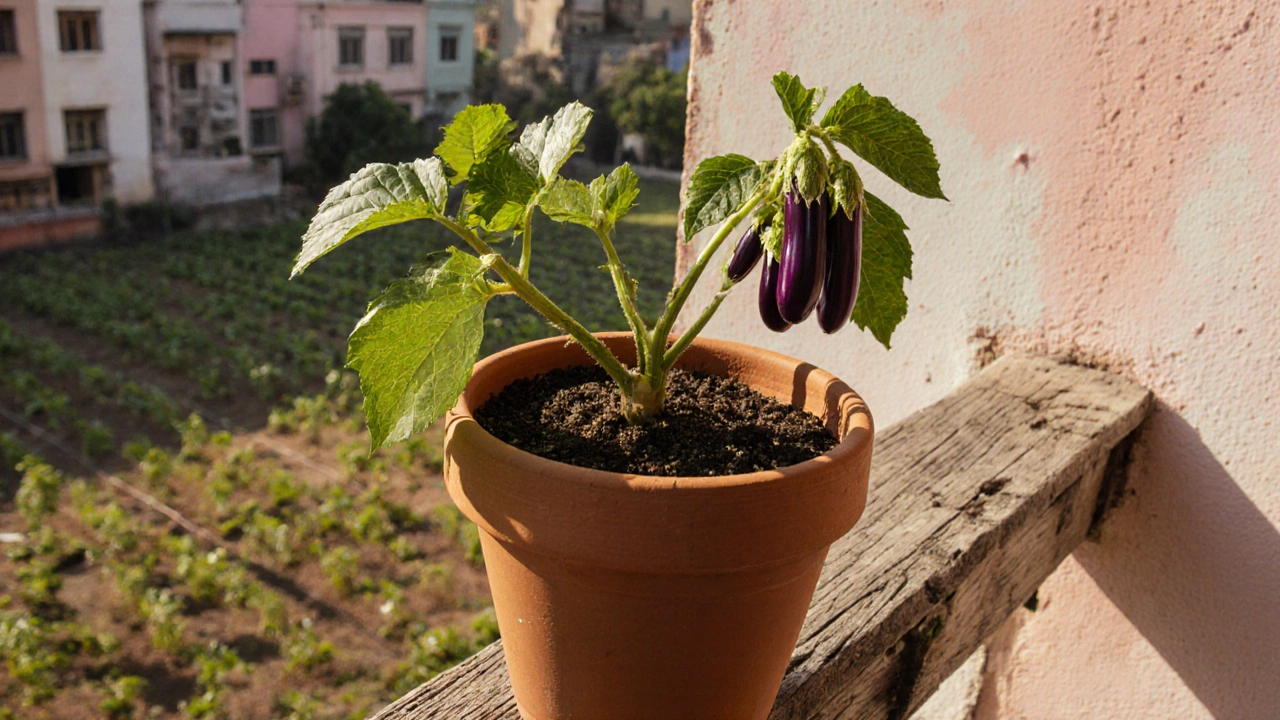
Frequently Asked Questions
Frequently Asked Questions
Why is Brinjal called the king of vegetables?
Because it adapts to almost every Indian spice profile, offers solid nutritional benefits, and grows well across diverse climates, earning it the royal nickname.
Can I grow Brinjal in a small balcony?
Absolutely. Use a 12‑inch pot with a good drainage mix, provide 5‑6hours of sunlight, and water consistently. A dwarf variety like Mini‑Thai works best.
Which Indian region produces the most Brinjal?
Punjab, Uttar Pradesh, and Gujarat together account for over 40% of the country’s Brinjal output, thanks to fertile alluvial soils and reliable irrigation.
Is Brinjal safe for people with nightshade sensitivities?
Brinjal belongs to the Solanaceae family, which contains alkaloids that can trigger reactions in highly sensitive individuals. If you’re prone to nightshade issues, start with a tiny portion and monitor your response.
How long can harvested Brinjal be stored?
At room temperature, firm fruits last 5‑7days. In a refrigerator’s crisper drawer, they can stay fresh for up to 2weeks.
Quick Takeaways
- The title “king of vegetables” belongs to king of vegetables India, i.e., Brinjal.
- Its versatility, nutrition, and climate resilience set it apart from other Indian veggies.
- Choose a variety that matches your region; Turkish for the north, Mini‑Thai for containers.
- Follow simple soil, spacing, and watering rules to enjoy a steady harvest.
- Experiment with classic dishes like Baingan Bharta, Vangi Bath, or Begun Chhona to taste the royalty.
